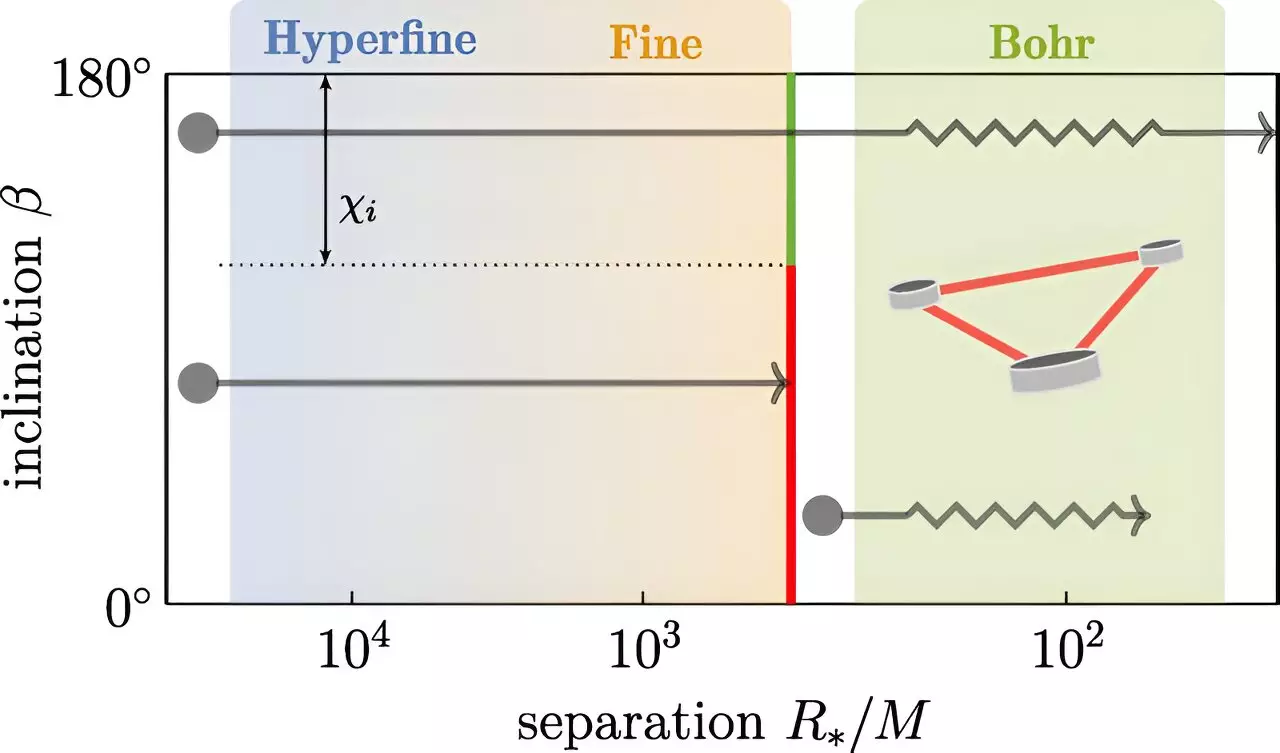Recent advancements in astrophysics have been marked by an unusual interplay between the enigmatic phenomena of black holes and the hunt for new subatomic particles. A groundbreaking study published in *Physical Review Letters* by physicists from the University of Amsterdam (UvA) and the Niels Bohr Institute in Copenhagen proposes that scrutinizing the mergers of black hole pairs could potentially illuminate the existence of new particles. This intriguing claim arises from six years of meticulous research, especially by a collaborative team including renowned physicists Giovanni Maria Tomaselli, Gianfranco Bertone, and former UvA master’s student Thomas Spieksma.
Gravitational waves—ripples in spacetime generated by massive cosmic events—serve as powerful tools for probing the universe’s most elusive aspects, including black hole mergers. As these waves traverse through space, they transmit crucial information regarding the characteristics and dynamical processes of black hole pairs. The convergence of two black holes ignites a cascade of gravitational waves that may hold significant insights into their orbits and the intricate dynamics at play.
This research pivots on the premise that the gravitational waves emitted during such mergers are laden with details that can reveal the underlying physics governing these enigmatic celestial phenomena, including the potential presence of previously undetected particles.
Central to this study is a theoretical concept known as black hole superradiance. This phenomenon occurs when a rapidly spinning black hole interacts with an external field of ultralight bosons—hypothetical fundamental particles that are lightweight compared to those previously identified in particle physics experiments. When a black hole spins at sufficient velocity, it loses some of its mass, creating a “cloud” of ultralight particles around it. The authors cleverly describe the black hole-cloud system as a “gravitational atom,” drawing parallels with the electron clouds surrounding atomic nuclei.
This analogy reinforces the idea that just as electrons can occupy different energy states within an atom, these ultralight bosons can experience transitions governed by specific resonant frequencies. It’s this interplay and the subsequent particle cloud dynamics that may yield a tantalizing glimpse into new dimensions of matter.
The researchers conducted a detailed examination of how the orbital evolution of binary black holes is influenced by the presence of these ultralight boson clouds. During their studies, they uncovered two noteworthy phenomena: resonant transitions and ionization. Resonant transitions occur when the particle cloud undergoes “jumps” between different states, akin to an electron transitioning between orbits within a conventional atom. Conversely, ionization describes the ejection of parts of this cloud, leading to significant consequences for the emitted gravitational waves.
Both phenomena manifest distinct signatures in the gravitational wave data collected by observatories. Understanding these imprints is essential, as they provide critical insights into the underlying nature of black holes and the universe itself. The challenge remains, however, to decipher the specifics of the particle cloud states to fully interpret these signals.
By synthesizing past research with this current analysis, the study offers a fresh perspective on the evolution of binary black holes and their accompanying boson clouds. The researchers postulate two primary outcomes, each brimming with significance. If a black hole and its associated cloud rotate oppositely, the cloud persists and can be detected through ionization effects, which would be exhibited as distinctive gravitational wave patterns. Conversely, if the motions align, resonant transitions could obliterate the boson cloud, challenging researchers to identify very particular orbital characteristics defined by eccentricity and inclination.
This dual approach opens the door to robust search strategies for unveiling nascent ultralight particles. With advances in gravitational wave detectors, the community anticipates a surge in detections that could validate or refute theoretical predictions made by these physicists.
As we stand on the threshold of potentially epoch-making discoveries, the convergence of black hole physics and particle physics appears increasingly promising. The insights gleaned from these gravitational wave observations could bridge the gap between the visible cosmos and the esoteric world of subatomic particles, leading to a deeper understanding of the universe’s fabric. As this field progresses, the question of whether ultralight bosons truly exist remains tantalizingly open, beckoning astronomers and physicists alike to embark on this profound quest for knowledge.


Leave a Reply